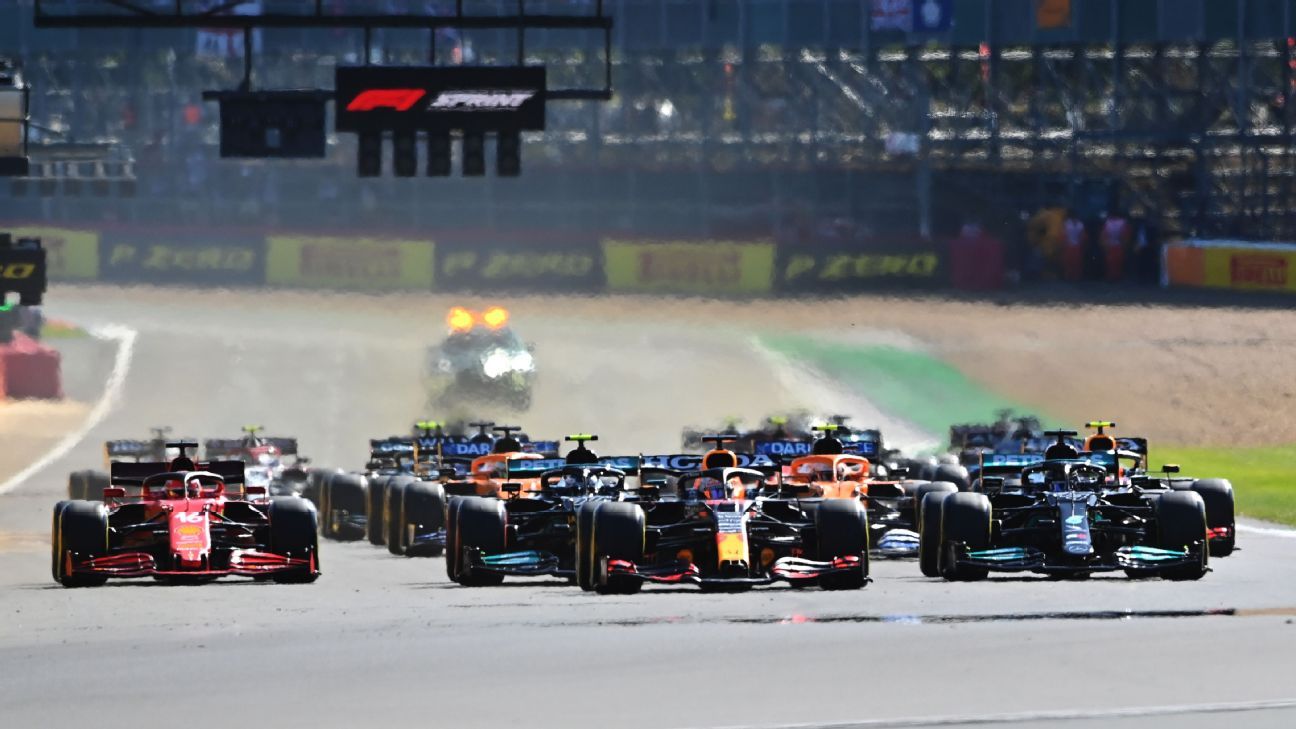The Emilia Romagna Grand Prix is the first of three Formula One races this year to feature a revised schedule to the usual.
This weekend will see a third competitive session — the sprint qualifying race — added between the traditional qualifying session and the race.
F1 introduced the sprint format last year in a bid to spice up events, choosing the British GP, Italian GP and Brazilian GP to do so. Those three races happened to each feature a memorable moment in Max Verstappen and Lewis Hamilton‘s epic championship fight, with collisions at Silverstone and Monza and a controversial on-track battle for victory at Interlagos, albeit during Sunday’s main event and not during the newly introduced sprint race.
The sprint races themselves continue to divide opinion in F1, but F1 has made one change in particular that should make the Saturday event far more competitive than what we saw last year.
What’s the sprint qualifying format?
This weekend, the schedule looks like this:
Friday: Qualifying (10.55AM – ESPN2)
Saturday: Sprint qualifying (12.25PM – ESPN)
Sunday: Grand Prix (8.55AM – ESPN)
The most obvious difference from a normal weekend is that the traditional one-hour qualifying session shifts from Saturday to Friday, with one of the three practice sessions being dropped from the schedule as a result.
The standard qualifying remains unchanged in format, taking part across three mini sessions — five drivers are eliminated from Q1 and another five from Q2, leaving a 10-car fight for pole position in Q3. The key difference is that the result of that Q3 session sets the grid for the short sprint race on Saturday afternoon and not for Sunday’s grand prix.
That race is one-third the distance of an F1 race and is capped at 100 kilometers, meaning drivers can race from start to finish without needing to pit. The result of Saturday’s event (which will be 21 laps in Imola) sets the grid for Sunday’s race.
Last year, points were handed out to the top three finishers only, but this has been tweaked for the new season.
What has changed this year?
Venues
While Brazil has kept its sprint qualifying schedule for this year, Silverstone and Monza have reverted to traditional weekends.
In their place, this weekend’s Emilia Romagna Grand Prix and July’s Austrian Grand Prix will feature the sprint format.
Points for the top eight finishers
Last year, there were just three points-paying positions on offer. First (three points), second (two points) and third (one point).
This has been extended to the top eight this year, with eight points on offer for the winner and the rest being scaled down from there.
The hope is this will create more competitive racing away from the top end of the grid, as some drivers were happy to settle into a position last year once the drama of the opening laps had settled down.
With more points on offer, a big mistake for a championship contender in a sprint qualifying event might have a bigger cost: instead of losing three points, a driver could lose eight to a rival if he encounters any drama.
Pole position in the history books
Fear not, history buffs, pole position on these weekends will now go to the driver to set the fastest lap in qualifying on Friday.
There was some frustration among traditionalists last year when the official ‘pole position’ label was given to the driver who won the sprint qualifying race. The winner of the qualifying session in those three events instead was given the rather less historic crown of ‘Pirelli Speed King’.
This year, the rules have been tweaked to ensure the driver who sets the fastest lap in the Friday qualifying session will be regarded as the driver who won pole position.
